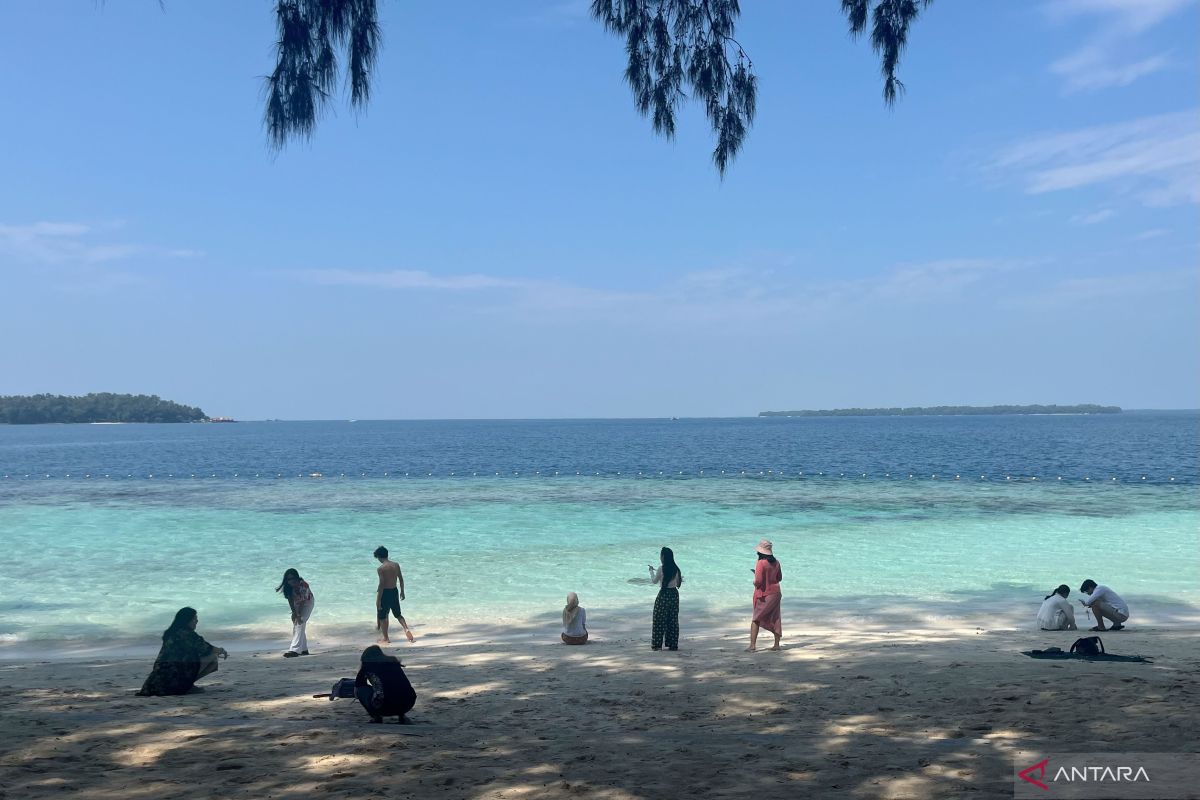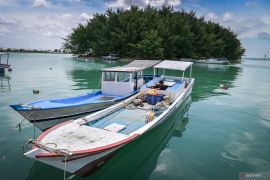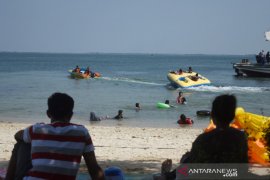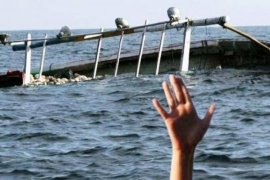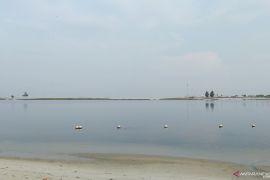Almost the entire Seribu Island Administrative District lies within the Seribu Islands National Park, the only national park within Indonesia’s capital, recognized as an ASEAN Heritage Park in 2017.
The government recorded various protected species in the Seribu Islands, including the giant clam (Tridacna gigas), scaly clam (Tridacna squamosa), and hawksbill sea turtle (Eretmochelys imbricata).
Seribu Islands is also known as a habitat for dolphin species, including the bottlenose dolphin (Tursiops).
As dolphins are not easily photographed by residents or tourists, their appearances in the Seribu Islands often attract public attention when images or videos are shared on social media.
This is why Seribu Islands Tourism and Creative Economy Office Head Sonti Pangaribuan beamed when she showed a video of dolphins from her phone to exchange students in Pramuka Islands.
Those exchange students are the recipients of the Foreign Ministry’s 2025 Indonesian Art and Culture Scholarship (IACS), participating in an excursion to the Seribu Islands.
“Look at how close it is! As if we can touch it,” a foreign student said upon seeing the video.
Pangaribuan explained that the video was sent by a staff member who was riding a jet ski near Pramuka Island and saw several dolphins swimming nearby, as though they were seeking company. The staff member then recorded the moment and shared it with her.
She told the students that the chances of spotting dolphins increase when sailing out to sea, though a keen eye is often needed.
Dinner time
While sailing to Sepa Besar Island, considered one of the top resorts in the Seribu Islands following the completion of its refurbishment, sightings of dolphins have also been reported there.
Dolphins can even be seen at night, when they begin hunting for dinner.
At the same time, tourists staying in Sepa Besar approached the island’s coastline, hoping to catch a glimpse of dolphins that night. Spotlights under the sea help tourists detect dolphins if they approach the coast.
Shortly after 8.30 p.m. local time, tourists heard splashing in the sea. It turned out to be small fish darting sporadically, seemingly trying to escape something that lurks beneath the surface.
Suddenly, a large dolphin emerged and broke the surface. “Chomp, chomp!” An unlucky fish, within its reach, was gulped by the dolphin to satisfy its hunger.
The spotlight shining onto the sea makes the dolphins more visible to the tourists, allowing them to enjoy the natural spectacle.
Before long, a second dolphin appeared to eat and, as though wanting to perform before the tourists, demonstrated a different hunting technique: it headbutted a small fish to the surface and then gulped it down.
The tourists, overjoyed with this sighting, attempted to record the spectacle with their camera lenses. Despite strenuous efforts to chase the dolphins with their phone camera, the dolphins swam faster before plunging into the deep sea, no longer to be seen.
Robiya Nurmatova, an exchange student from Uzbekistan, said she was glad to see the dolphins in the sea twice, including in Sepa Besar, during her three-day visit to the Seribu Islands.
What makes it even more remarkable is that her trip to the Seribu Islands was also her first sailing experience. It is something she could never have done in her doubly landlocked home country in the heart of Central Asia.
“It was such a cool, interesting, and funny situation for me, and I am so excited,” she said regarding the sightings of dolphins, though she admitted feeling somewhat sad about not being able to capture the moment on her phone.
Healthy sea
Commenting on the dolphin sightings in the Seribu Islands waters, which had also been reported earlier this year, Jakarta Environment Office Head Asep Kuswanto stated that they indicate improving sea conditions on Jakarta’s northern coast.
He explained that dolphins have a heightened sensitivity to environmental conditions, and they tend to avoid polluted areas. Therefore, their presence in the Seribu Islands can be a litmus test of the improving sea environment.
“Their presence means that environmental preservation efforts, such as waste management and sea cleanup, have yielded their results. It is a positive indicator,” Kuswanto affirmed.
The agency head expressed hope that seeing dolphins would raise public awareness of the importance of maintaining the environment for ecosystem sustainability and to ensure that the Seribu Islands' beauty can be enjoyed for generations.
It is remarkable that Jakarta is home to dolphins living freely in the sea—beyond the confines of aquariums—especially when many residents do not realize that their city includes hundreds of islands, not just land in western Java.
The presence of dolphins not only highlights the improving sea conditions in the Seribu Islands but also serves as a reminder of Jakarta’s natural beauty, which continues to captivate residents and visitors alike.
Related news: Expect exchange students to promote Seribu Islands: official
Related news: Jakarta governor proposes new island development for waste management
Related news: Seribu Islands tourism to create 35 thousand job opportunities: Uno
Editor: Azis Kurmala
Copyright © ANTARA 2025
